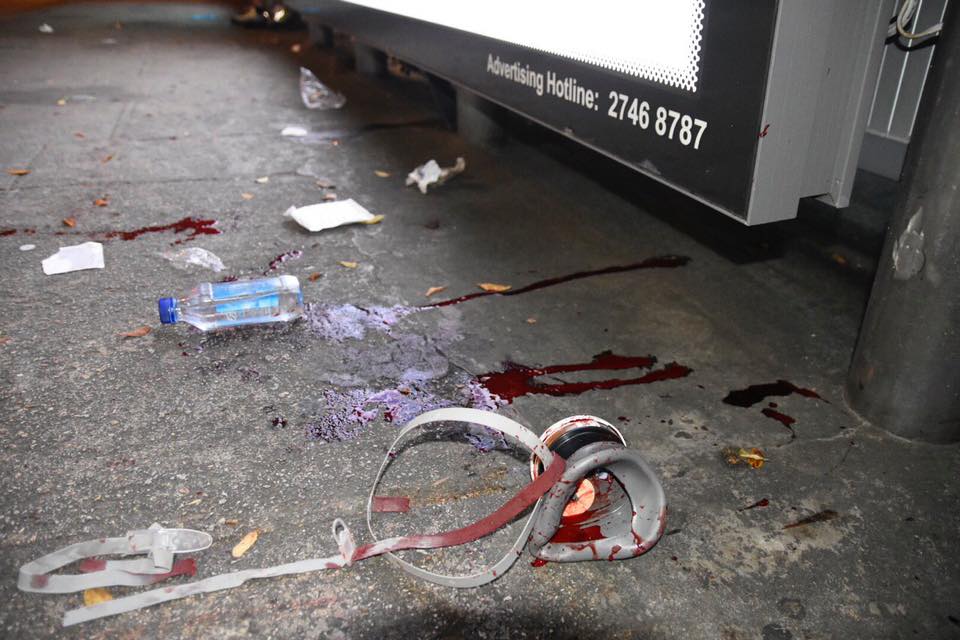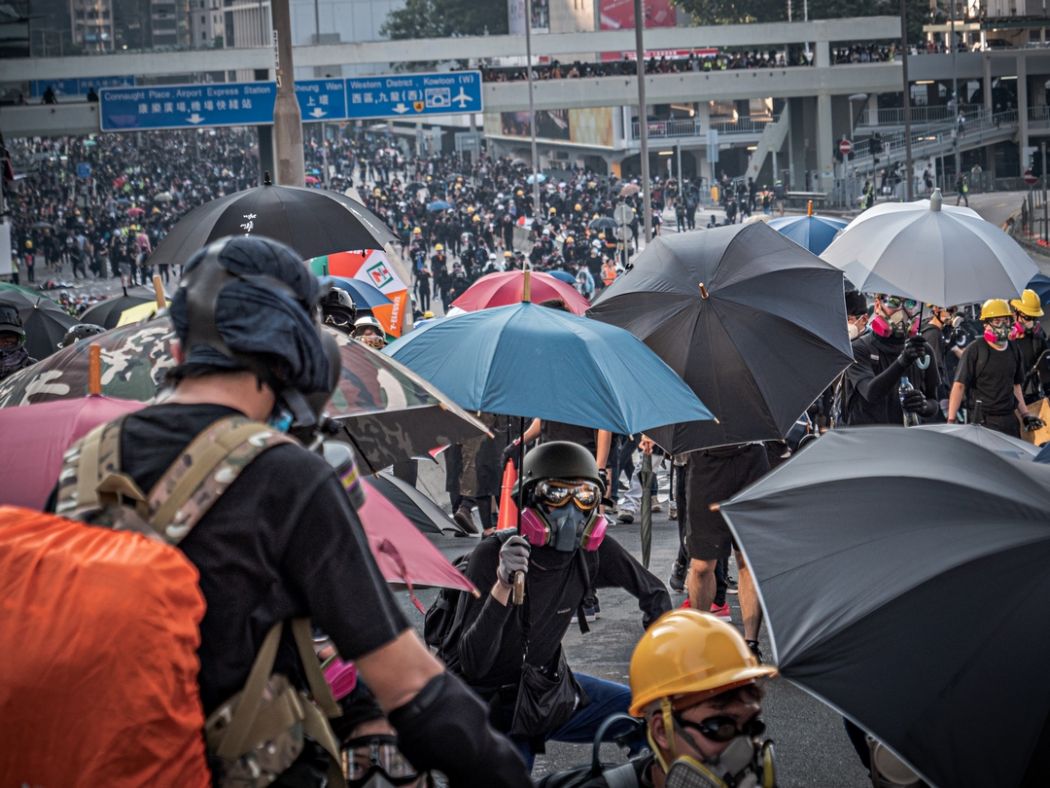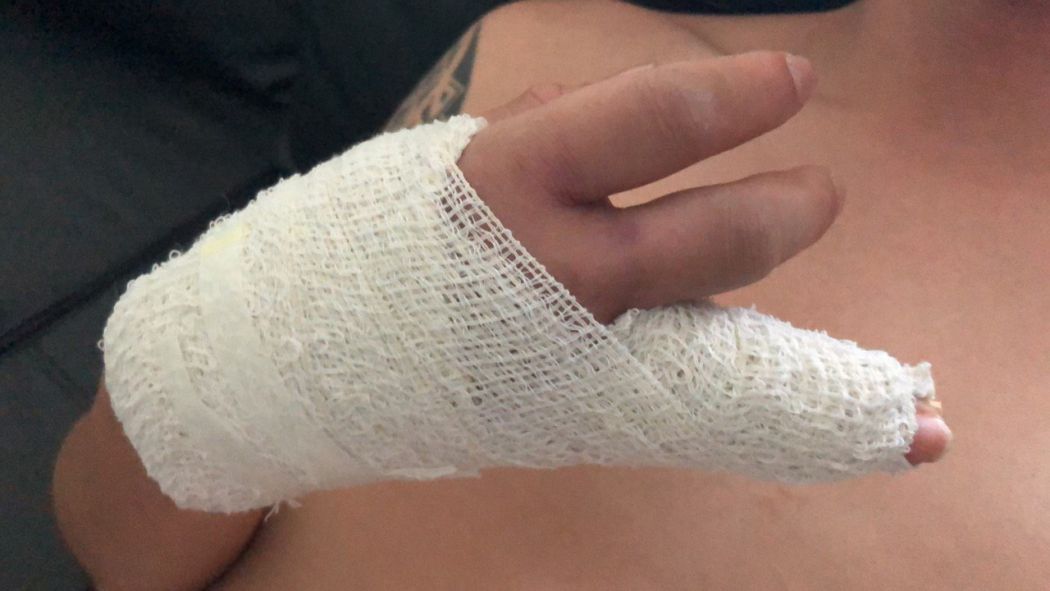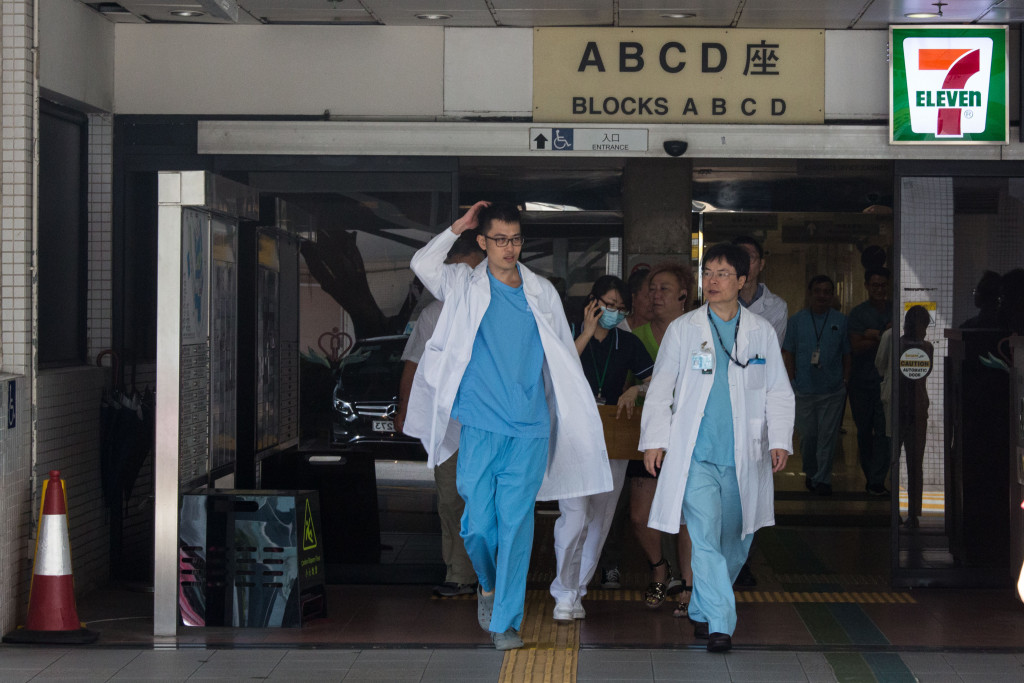For two medical volunteers at an underground clinic in Hong Kong, their work is symptomatic of a wider rift in society. Hui and Mo (not their real names) have seen the darker side of the city’s five months of unrest: broken bones, chemical burns, sprains, swollen and discoloured bruises, arising from skirmishes between protesters and police.
In any given week, the medics – who operate via an anonymous Telegram channel – receive 30 to 50 patients, with numbers rising to nearly 100 depending on the severity of the clashes. According to the two women, patients are aged anywhere between 15 and 40 years old, and up to 80 per cent of them are frontline protesters.

After an initial discussion over the messaging app, they are invited to attend a “mobile clinic,” operating out of borrowed cars which the volunteers alternate between to avoid number plate detection.
“The reason we don’t use a constant location is that we are afraid our identity or… the identity of the patient will not be kept secret,” Hui told HKFP.
Driven to secrecy by a climate of fear arising from mass arrests, some of which were made inside hospitals, the clinic has treated those who do not want to seek medical treatment at public hospitals. Their patients often fear being associated with the ongoing protests, which are increasingly unauthorised and marred by violence.
Many of those who attend the clinic are too scared to attend in person and send a representative, who typically attends on behalf of multiple patients, the medics said.

After the first firing of tear gas this year on June 12, at least five cases emerged of protesters being arrested after seeking medical treatment at hospitals. Medical sector lawmaker Pierre Chan later said he had evidence that the police could access patient records through a loophole, including whether they had participated in a “mass gathering outside LegCo,” though the Hospital Authority has denied this accusation.
In July, local media reported that an orthopaedic consultant had posted a Facebook status which some netizens interpreted as meaning he would beat up protesters who walked into his practice.
To protect patients’ privacy, the underground clinic has only ten core members, three of whom man the lively Telegram account, as well as a network of specialists, made up of mutual friends and close contacts. According to the ground, no patient has been turned away, regardless of whether they were active participants in the protests or not.
“As long as they feel uncomfortable to go to public hospitals then there’s no reason why we shouldn’t help them,” Hui said.
Doing the ‘right’ thing
Hui, 25, and Mo, 24, both pre-interns working part-time before graduation, were granted pseudonyms to avoid workplace repercussions after reading about employees of flagship carrier Cathay Pacific who were fired for expressing support for Hong Kong protesters.

“We are not asking for credit or anything,” Mo said, her voice muted by a surgical mask.
“We are just doing what we think is right,” Hui added.
Hong Kong has been dogged by increasingly ugly protests triggered by an ill-fated extradition bill, which would have allowed case-by-case fugitive transfers to China. The movement has spiralled into wider calls for universal suffrage, accountability over alleged police misconduct, amnesty for arrested demonstrators, and other community grievances.
Since June, scores have been injured in sometimes bloody conflicts, including two reported cases of serious eye injuries caused by police projectiles, numerous instances of mob justice, two young men shot by police and, most recently, an officer who had his neck slashed with a sharp object on October 13.
The underground clinic was the brainchild of Hui, a former frontline first-aider who was repeatedly approached by protesters with similar problems.
“I knew how to answer simple questions, but later on the questions got more complicated and I had to ask my friends for advice,” she said. “My friends and I gradually realised that a lot of existing support might be too formal or public or not available to protesters, and they might need some alternatives.”
Blisters, bruises and broken bones
The most common injuries included irritation from tear gas manifesting in eye inflammation, persistent diarrhoea and respiratory symptoms such as coughs. Others, which the pair called ‘second-tier’ injuries, involved bruises, sprains, pneumonitis with patients coughing up blood after CS gas exposure, and blisters from water cannon jets laced with chemical irritants.
In one image, shared with HKFP with the patient’s consent, a person reveals a large purple and red bruise caused by blunt force trauma, likely from a police baton or projectile, according to the medics.

Another patient agreed to share an image of dermatitis on his hands and limbs from tear gas exposure at close proximity, causing painful irritation which manifested in reddened and flaking skin, probably worsened by a pre-existing condition such as eczema, the medics said. It took two weeks to establish trust with the man who initially refused treatment out of fear of arrest, they added.
“Originally, if they manage it well with disinfection it should be fine,” Hui explained. “However, people don’t have the knowledge, nor will they seek help. So they only find us after two weeks so by the time we see them, it’s already a really bad wound with a lot of discharge and we have to help them—a few cases we’ll need to help them to suture.”
The worst injuries dealt with by the clinic, however, arose out of scuffles with police. One arrestee had his humerus bone fractured into four parts.
“Because his arms were like this,” Hui said, with her palms outstretched in front of her. “And he was pushed to the floor, so his chest got injured as well.”
In another case, a male patient reportedly received a facial fracture on his upper right cheek after he was hit in the abdomen by a rubber bullet and fell to the ground, giving officers time to capture and beat him around the head with a blunt object.

One male patient agreed to share an image of his swollen right hand, bound in gauze, covering a fractured ring finger that had been stabilised using a splint. He had it had been struck by a rubber bullet and later required surgery.
Invisible trauma
In September, a report by NGO Amnesty International said that Hong Kong police have used reckless tactics and retaliatory violence in their crackdown on protesters during the summer, resulting in injuries such as broken bones and internal bleeding. But the most complex problems may be the invisible psychological wounds arising from the sustained conflict, the medics said—notably post-traumatic stress disorder, hallucinations, insomnia, and suicidal ideation.
“There was one case, at around 2am, the patient sent us a picture of him sitting on top a rooftop and he literally told us he wanted to [commit] suicide,” Hui said, flipping over her mobile phone to show an image of a pair of legs danging above a distant, dimly lit alleyway.
“He initially told us that he had a headache and wanted sleeping pills,” she added. “But I think as responsible doctors we won’t just tell them to go buy sleeping pills because those require a prescription and for every patient who has insomnia there must be an underlying reason behind it.”

After coaxing the man off of the ledge, the medics – who only have basic mental health training – referred him to a social worker who could provide him with consistent psychiatric help.
“I think for psychiatric [care], the most important part is about the assessment and the long-term follow up,” Mo added. “We struggled over whether we could offer adequate help to these patients because, in some ways, we don’t intend for this clinic to be a permanent one. It’s only a temporary one for this particular [set of] social circumstances.”
The underground clinic is, in many ways, a byproduct of a city in crisis, where the lack of public trust in the government throws associated institutions – and, by default, its employees – into question.

Hui and Mo, though hardly anomalies, are medics who extend their duty of care to those outside of the hospital in response to unprecedented circumstances. The two women and the other qualified members are all driven by a sense of shared social responsibility so strong that they have spent around HK$30,000 of their own money to keep the project running.
Hui said that the clinic has turned down donation offers from a potential overseas patron for fear it could be interpreted as foreign interference.
“We want to avoid these rumours so we tend to find doctors who are kind enough to see the patients for free,” she added. “For example, if you do a suture, an outside doctor might charge HK$2,000. But some of them will occasionally do it for free for us.”
Beijing officials have frequently touted foreign interference as an escalating factor in the ongoing pro-democracy movement. Meanwhile, Chief Executive Carrie Lam has publicly lambasted “any form of intervention” from external governments into Hong Kong’s domestic affairs as inappropriate.
The pair said that this has compounded their frustrations with accusations from so-called “blue ribbon” groups that claimed the clinic has leeched off of public hospital supplies.
“But all of these items we don’t get from the hospitals, we purchase ourselves,” Hui said. “Anything we do – they will pick on us and create rumours out of it.”

The medics said their work is not only about tending to the injured, but also healing the public’s broken trust in government-funded medical workers.
“It really breaks my heart because in the past people had a good trust in doctors,” Hui said. “It’ll really take years to rebuild the trust, and I think it is frustrating because the trust is not disrupted by doctors themselves but [a] third party.”
Mo said that in some public hospital doctors’ messaging groups, participants will let each other know when medics who have a history of reporting patients are working, so that they can refer their patients to other specialists.
Though the pair consider the underground clinic a bandaid to the current political crisis, they said they hope their work will go some way to restoring faith in an institution that relies on patient-doctor confidentiality.
“You can treat problems to do with a disease in a way you can’t really treat society,” Mo said. “No kind of medicine can help with that.”
Hong Kong Free Press relies on direct reader support. Help safeguard independent journalism and press freedom as we invest more in freelancers, overtime, safety gear & insurance during this summer’s protests. 10 ways to support us.

